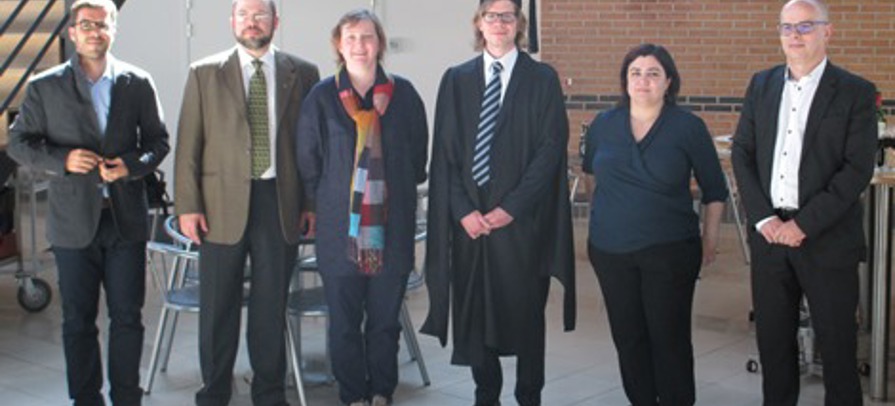Henning Thomsen vart ph.d á Aalborg Universitet
Mánadagin 30. mai vardi Henning Thomsen ph.d. ritgerð sína á Aalborg Universitet. Ritgerðin hevur heitið ”Wireless Transmission Methods for Ultra-dense Cellular Networks and Machine-type Communications”.
Henning Thomsen hevur verið innskrivaður til ph.d lestur á Institut for Elektroniske Systemer á Aalborg Universitet.
Vegleiðarar hava verið Petar Popovski, professari, og Elisabeth De Carvalho, lektari á Aalborg Universitet.
Í metingarnevndini vóru:
Kimmo Kansanen, lektari á NTNU í Trondheim, Norra
Jesus A. Zarate, seniorgranskari á Centre Tecnologic Telecomunications de Catalunya (CTTC), Spania
Tatiana K. Madsen, lektari á Aalborg Universitet, forkvinna
Les um Henning Thomsen í Heilagrunninum
Ritgerðin snýr seg um, hvussu samskiftisprotokollir í tráðleysum netum kunnu mennast við atliti til at loyva nógvum eindum at samskifta samstundis. Her verður fyrst og fremst hugsað um samskifti, sum ikki beinleiðis er stýrt av persónum, sokallað Machine-to-Machine samskifti. Harumframt verður í ritgerðini eisini hugt at, hvussu samskiftisprotokollir til fartelefonisamskifti kunnu mennast við atliti til at hækka dataferðina. Úrslitini í ritgerðini kunnu nýtast í framtíðar 5G samskiftishøpi.
English summary
The emergence of the next generation of cellular communications has requirements spanning several dimensions. Traditional human-centric communications is increasing in number of devices and volume of data. This, as well as an explosive increase in node density, a characteristic of Ultra-dense Networks (UDNs), brings new challenges in satisfying those requirements. Other forms of communication not directly involving humans, including Machine-to-Machine (M2M) communications, also called Machine-type Communications (MTC), are also increasing, and motivate design of transmission protocols taking such forms of communication into account. This Ph.D. thesis is a contribution to the design and analysis of transmission protocols for M2M communications, and a two-fold contribution in UDNs, transmission schemes for two-way traffic in cellular networks using wireless backhauling and emulation of Full Duplex (FD) transmissions using Half Duplex (HD) devices.
There is increased interest in M2M communications in cellular networks such as Long-Term Evolution (LTE), particularly from smart metering applications and the Internet-of-Things. Since LTE is not designed with such traffic in mind, M2M traffic can cause congestion in the random access part of it. Motivated by this, we develop a mathematical model for obtaining the success probability of random access in LTE, for M2M devices. This model also features a limitation in the data phase of the protocol, and is compared with numerical simulations, where we observe a perfect match. Furthermore, the model is general enough to be used in other networks.
In order to accommodate M2M devices in LTE networks, we also consider a reservation scheme for M2M, which we call Code Expanded Radio Access Protocol. The idea of this scheme is to expand the contention space in LTE, so that a large number of M2M devices can be accommodated into the network. The performance and operation of the scheme is analyzed using Markov Chains, and is verified by simulations. Importantly, the scheme allows for an exponential increase in the number of accessing devices, compared to the linear increase in the baseline scheme, for a linear increase in system resources.
